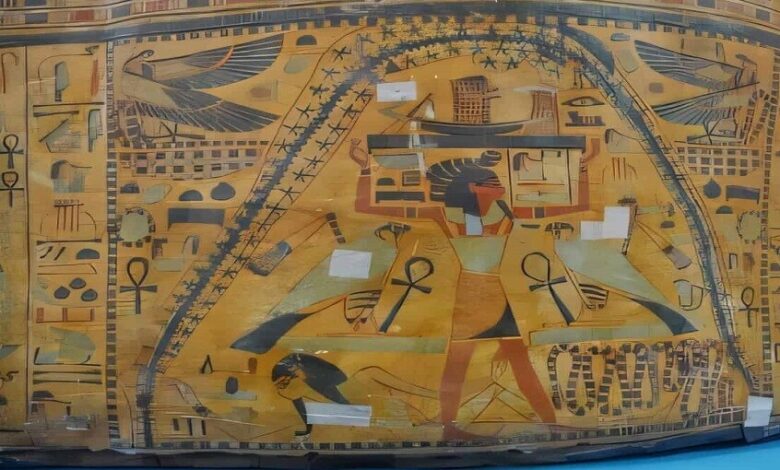
An Associate Professor of Astrophysics at the University of Portsmouth in the UK, Or Graur, discovered what is believed to be the oldest known depiction of the Milky Way in ancient Egyptian art.
Driven by his passion, Graur led a major project documenting mythological representations of the Milky Way across civilizations, RT reported.
The celestial bodies were associated with several Egyptian deities.
The scientist studied 125 images of the goddess Nut (the goddess of the sky) on 555 Egyptian coffins dating back approximately 5,000 years. He published the results of his study in the Journal of Astronomical History and Heritage.
In these images of the night and day sky, the goddess Nut appears as a nude woman sitting in a bow-like position, sometimes adorned with stars.
Nut was believed to protect the Earth from floods and also played a pivotal role in the solar cycle.
Graur believes this wavy line represents the Milky Way and points to the so-called “Great Divide,” a dark dust band separating the bright parts of the galaxy.
“When you compare this drawing to a modern image of the Milky Way, there’s a striking similarity,” he noted.
Similar wavy lines appear in four tombs in the Valley of the Kings. In the tomb of Ramesses VI, the ceiling is divided into the “Day Book” and the “Night Book,” both featuring arched figures of Nut separated by swaying golden lines.
The scientist explained, “I have not observed a similar line in any of the other cosmic representations of Nut, which reinforces my belief that while Nut and the Milky Way are related, they are not one and the same. Nut is not the embodiment of the Milky Way; rather, the Milky Way is one of the celestial phenomena that adorn her body.”




